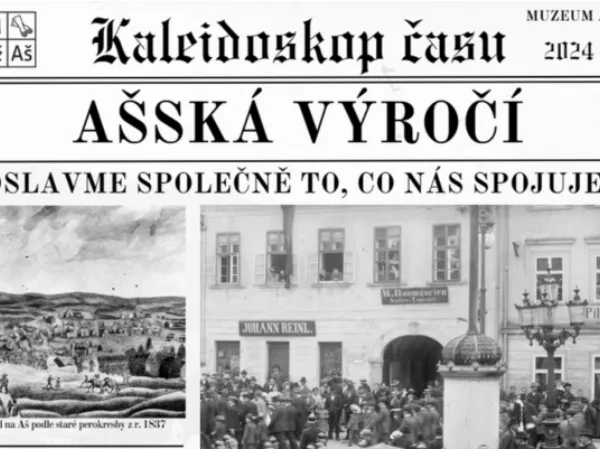Important dates in 2024
The year 2024 brings us an exceptional period that opens a window into the rich history of the Aš Peninsula. Significant anniversaries of historical events and significant monuments are an integral part of our cultural identity. Therefore, let us remember the key personalities and events that influenced the course of Aš history, and let us realize that we ourselves have reason to be proud of our origins.
Salva Guardia – 1724
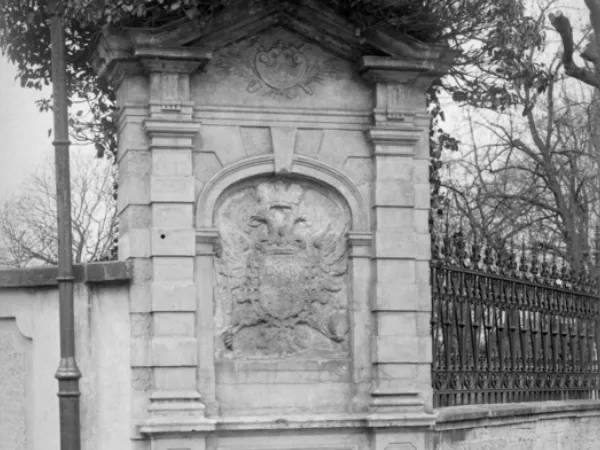
One of the unique monuments of the Aš region is a stone relief with the coat of arms of the Holy Roman Emperor Charles VI, known as Salva Guardia. Its Spanish name comes from the French word "Sauvegarde", which means protection from war plunder and exemption from the obligation to house the imperial army. The right to use this symbol was granted to the free lord Antonín Josef František Kryštof of Zedtwitz in a fief letter dated January 4, 1724. In 1804, Emperor Francis confirmed in a decree of the court office that the fief lords of the goods of St. Nicholas, including their subjects, should be protected according to the old laws, which guarantee them exemption from military quartering.
Legend has it that the inhabitants of the Chateau and the surrounding houses were exempt from military service, and therefore many young people took refuge with their relatives in the St. Nicholas Houses during the conscription period to avoid military service. In 1814, the chateau on Mikulášský vrch was hit by a major fire, the lords of Zedtwitz did not restore it and sold the crematorium. The stone monument to Salva Guardia was originally placed by Georg Unger in a niche where its replica is located today.
After the First World War, the Salva Guardia was threatened with removal as a symbol of the former imperial power. However, thanks to an exception, this monument was preserved. Since 1984, the museum has owned two Salva Guardias. During the general renovation of the museum building, it was decided to reconstruct the Salva Guardia. The replica, created at the instigation of the then museum director Josef Borsik, is still placed in a niche chapel in the museum garden, while the original has been exhibited in the auditorium of the Aš Museum since 2016.
Stone Bridge – 1724
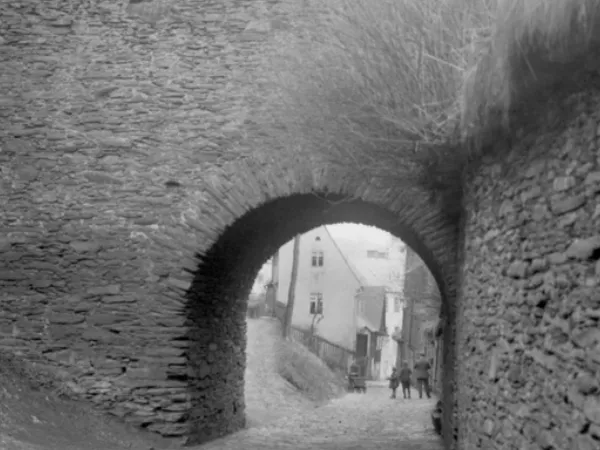
A single-arch bridge made of quarry stone was built on the former Příkopy Street, connecting the original cemetery at the Holy Trinity Church with the newly established cemetery.
Due to the large increase in population around 1700, the cemetery needed to be expanded. Therefore, in 1725, a second, so-called “lower cemetery” was founded, which was located on the opposite side of the alley in Příkopy. A massive stone bridge had to be built for convenient access.
Its consecration on the second Sunday of Lent in 1724 was performed by the Aachen parish priest and inspector Isaak Spengler, with hundreds of people in attendance. The year 1724 was carved on the eastern side of the bridge on a thin stone slab above the center of the arch. It is one of the few structures from before the great fire of 1814 that has survived to this day.
It has been a cultural monument since 1987 and this year it celebrates its 300th anniversary, making it the oldest landmark in Aš.
Great Fire – 1814
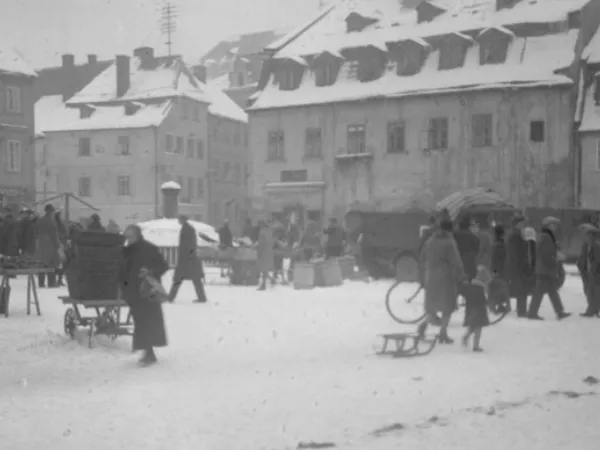
In 1814, Aš was engulfed in a major fire, allegedly caused by the theft of a pig. The firefighters at that time were only volunteers, had little experience and only had two fire engines. The disaster of the fire was completed when the fire reached the Market Square, where one of the merchants had stored gunpowder, which caused an explosion and further spread of the fire to the streets and buildings in Školní Street.
Despite the efforts of firefighters from Bavaria and Saxony who came to help, the fire destroyed other buildings and reached Mikulášská Street and the surrounding area, also affecting the Chateau (today's museum) and houses in the area. In total, 167 houses, 78 barns were destroyed and 250 families were left homeless.
The cause of the fire was originally thought to be an unfortunate fire set by a couple who had gone to feed a pig in the evening and the straw caught fire from a lamp. The family was blamed for this act and for this reason they allegedly fled to Germany. However, it was later discovered that the real culprits were two thieves who wanted to steal a pig from another village and then tried to poison the pig in Aš by lighting it with sulfur. This incident led to a catastrophic fire, and one of the perpetrators allegedly confessed on his deathbed.
Lookout tower on Háj hill – 1904
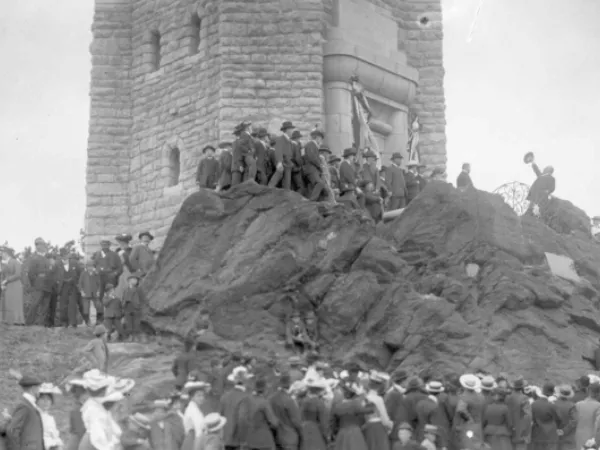
At the top of Háje, a stone lookout tower stands as a proud symbol of Aš. Despite its uniqueness and admirable history, it stands among only three similar buildings in the Czech Republic. The idea for its creation was born in the 19th century, when the Aš factory owner Georg Unger initiated a collection for its construction. The implementation took place gradually, and the ceremonial opening took place in 1904, welcoming more than 20,000 visitors in the very first year. Even after World War II, the lookout tower maintained its popularity and became a sought-after destination.
Gustav Geipel – 1924
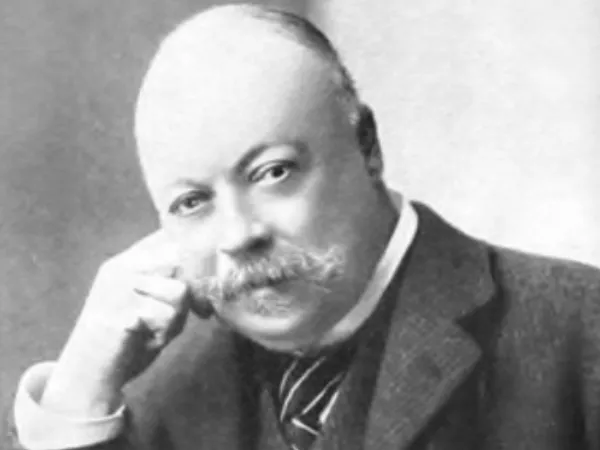
This year we also commemorate the important anniversary of the Aš patron Gustav Geipel.
The eldest son of the Aš industrialist Christian Geipel, after studying in Thuringia and Switzerland, he joined the weaving company founded by his grandfather Nikol Geipel. The Geipel and Jaeger company was the largest company of its kind in Aš and one of the most important in the entire Austro-Hungarian Empire at the time. It was from 1877 that Gustav Geipel also participated in the management of the business and the company acquired a new name: Geipel & Son.
His selfless heart cared for the citizens and his own employees, and his care for their lives left an unmistakable mark on the city's history.
Geipel's influence went beyond the usual limits: he improved infrastructure, supported education, medicine and culture, and above all, enriched the city with beautiful places that became the center of community life.
Unfortunately, Gustav Geipel died on July 13, 1914. The funeral service was held on July 16, 1914, attended by thousands of grateful fellow citizens.
On February 21, 1923, the Aš council decided to erect a monument to Gustav Geipel to honor his memory and express gratitude for his unmistakable contribution. The monument was unveiled on July 14, 1924, and so we can always remember this noble honorary citizen of the city of Aš as long as the monument stands.
History of the Aš coat of arms – 2004
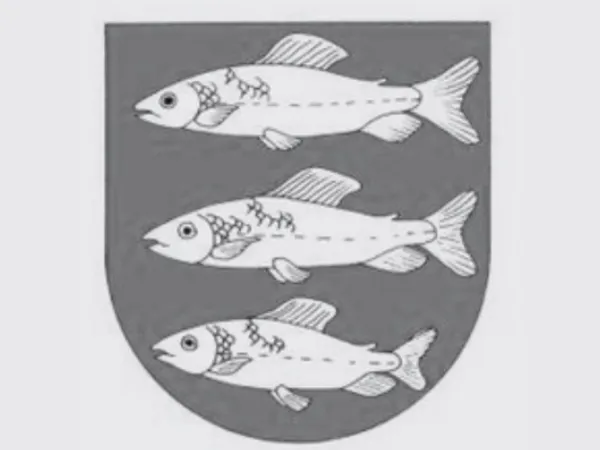
This year we celebrate 20 years since the approval of the new symbols – the coat of arms and the flag of our city. These symbols were officially approved on June 8, 2004 by the Chairman of the Chamber of Deputies of the Parliament of the Czech Republic. Although our city had symbols before this date, their form did not comply with heraldic rules. The designs for the current coat of arms and flag were created by heraldic expert Stanislav Kasík from Roudnice nad Labem , and their final form was decided by the citizens of Aš themselves through a poll, in which the new symbols received 300 votes.
